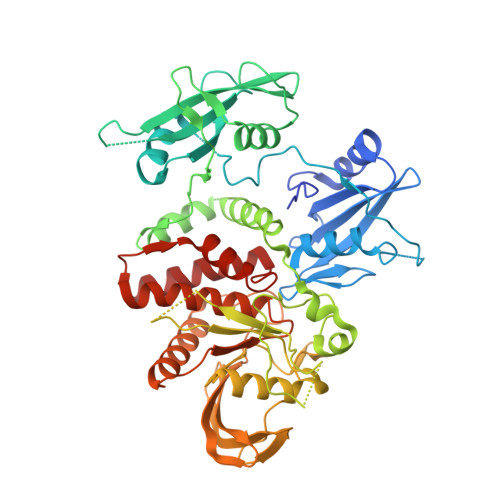Discovery of 5-Azaquinoxaline Derivatives as Potent and Orally Bioavailable Allosteric SHP2 Inhibitors.
Elsayed, M.S.A., Blake, J.F., Boys, M.L., Brown, E., Chapsal, B.D., Chicarelli, M.J., Cook, A.W., Fell, J.B., Fischer, J.P., Hanson, L., Lemieux, C., Martinson, M.C., McCown, J., McNulty, O.T., Mejia, M.J., Neitzel, N.A., Otten, J.N., Rodriguez, M.E., Wilcox, D., Wong, C.E., Zhou, Y., Hinklin, R.J.(2023) ACS Med Chem Lett 14: 1673-1681
- PubMed: 38116446
- DOI: https://doi.org/10.1021/acsmedchemlett.3c00310
- Primary Citation of Related Structures:
8U7W, 8U7X - PubMed Abstract:
SHP2 has emerged as an important target for oncology small-molecule drug discovery. As a nonreceptor tyrosine phosphatase within the MAPK pathway, it has been shown to control cell growth, differentiation, and oncogenic transformation. We used structure-based design to find a novel class of potent and orally bioavailable SHP2 inhibitors. Our efforts led to the discovery of the 5-azaquinoxaline as a new core for developing this class of compounds. Optimization of the potency and properties of this scaffold generated compound 30 , that exhibited potent in vitro SHP2 inhibition and showed excellent in vivo efficacy and pharmacokinetic profile.
- Medicinal Chemistry, Pfizer-Boulder, Boulder, Colorado 80301, United States.
Organizational Affiliation:

















